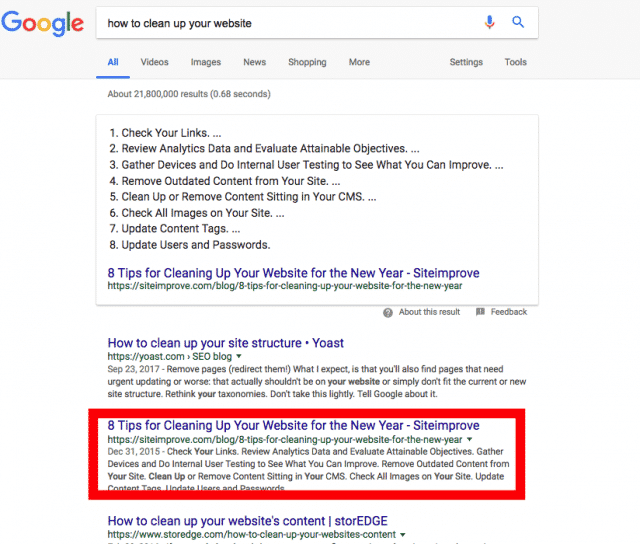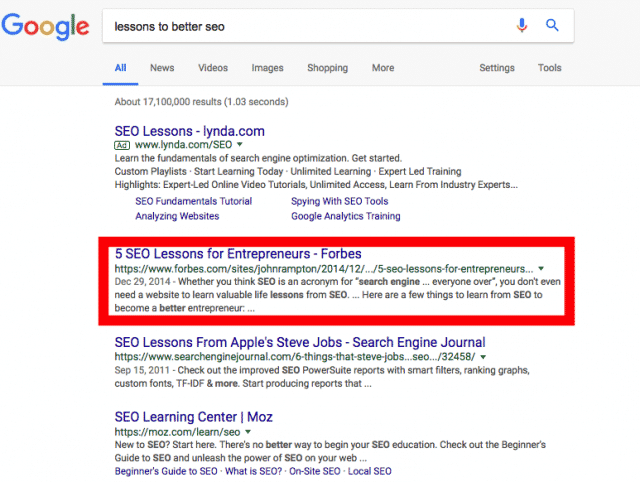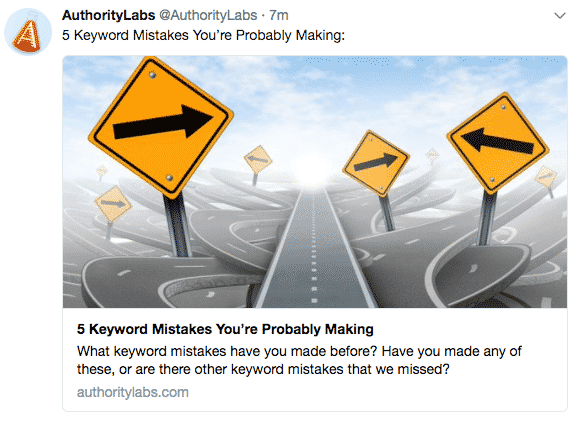It’s a click-bait world, and we’re all just living it. We’re sure you’ve fallen prey to a misleading headline like we have. It’s no fun to land on a page that doesn’t come close to offering what you were promised.
We see click-bait every day on search engine results and social media posts, but we also see a ton of great headlines everywhere. You know the ones. They’re clear and concise, useful, but also compelling. Makes you want to click.
A really strong headline still carries an immense amount of weight in SEO. In a digital world filled with an incredible number of distractions, you need to focus on your headlines more than ever. It’s one of the best ways to earn a better ranking and get click-throughs and conversions.
These days, a lot of the best and most clicked-on headlines seem to fall into one of two categories:
1) Optimized to go viral and be used for social media sharing
2) Optimized for SEO
We’re here to tell you: you can have both.
Writing highly clickable, sharable headlines isn’t always easy, but it’s doable.
Here are our top tips for creating compelling headlines that rank.
Clarity First
No matter what you’re writing about, your headline needs to explain it to the reader. It’s easy to get lost in coming up with clever puns, but if your headline is lacking any clarity, you’re not going to bring in readers. What’s worse, you may end up confusing them or pushing them away from your site for good.
The best way to accomplish clarity is to answer your readers’ questions: What’s this about, and what’s in it for me? We’ll dive into sharing the key benefit of “What’s in it for me?” in a bit, so let’s start with the “What’s this about?”
Any good headline will plainly tell readers what’s coming next, and not try to fool them. You might be thinking: “Being a little misleading does seem to work in those bait-y articles. Why can’t I do it?”
The first reason not to trick your audience with your headline is SEO. If you care about SEO, click-bait isn’t the right strategy for you.
Click-bait articles have much higher bounce rates, and search engines notice this. Your rankings could get knocked down a bunch of notches if your bounce rate skyrockets.
Another reason not to be misleading in your headlines? You want your audience to trust you, and you want to be seen as an authority in your field. Trying to try people into reading your content won’t accomplish that.
That said, we told you that you can develop social-share-worthy headlines that still rank, so don’t get discouraged by this. Just be sure to start with a clear, easy to understand headline that guides readers in. Then, combine clarity with some of these other techniques and you’lll make it hard for them to resist clicking.
Good Keywords Come Second
Once you hone in on clarity first, think about good keywords to integrate second. This means that you should use keywords in a relevant, useful way, rather than jamming them into a headline. If you stuff them in, Google is sure to notice, and audiences will feel less compelled to click.
Use your keyword research and knowledge about your audience personas to think through what works best. Your top keywords that you’ve used in the content on the page probably belong in your headline, too.
If possible, bring one or two of your keywords to the front of your headlines to really boost your SEO results.
Write By Numbers

Listicles are all the rage, and there’s a good reason. Numbers are compelling. They tell people right off the bat how much they’re going to get, whether it’s “7 Smart Reasons to Work from Home” or “3 of the Coolest Kitchen Gadgets You Need Now.”
If lists and numbers make for compelling content, then shouldn’t they dominate your headlines, too? We think so. They perform at incredible rates when it comes to SEO and click-throughs.
Plus, using numbers as the format of your content will help your readers get through the entirety of your page or article. Numbers and lists help make everything more scannable, and that’s something you want to tell your audience in the headline: what you’re about to read will be easy to scan if you’re short on time.
Also, try to use odd numbers instead of even ones. Research shows that people respond better to groupings of three or five, to be exact, and odd numbers in general seem more authentic and dictated by the content itself rather than rounded out to an even number.
Give ‘Em What They Want
If you’re not giving them something, why would they click and read more? You’ll want to combine your best keywords in with the major benefit you’re promising.
Ask yourself: What’s the reader benefit here?
Your promise to the audience could be one of many things. It might increase their overall productivity, help them beat out the competition at work, cook a crowd-pleasing meal, make their hair shinier, offer innovative shortcuts so they can clean the house faster… and so on. Show off that key benefit in your headline.
Some of the words that really resonate (and these also pair well with numbers) in a headline include: “Facts,” “Tips,” “Secrets,” and “Lessons.” They showcase that you’re offering unique wisdom that will benefit them in some way.

Keep Them Short and Tweet(able)
For SEO, you might already know that you want your headlines to be under 72 characters, or 6 to 8 words. That will ensure the full headline displays in Google rankings, because if people can’t read it all on the search results page, you’ll probably lose them.
What you might not be thinking about is how headlines play into social media. Shorter headlines are also perfect for Twitter.
The thing is, you don’t want to use the full characters for your headline, because then there’s no room for anything else in a retweet of your content, like the link and an @ mention. That’s why you should aim for under 72 characters for optimal social sharing of your content.

Keeping headlines shorter is also just good writing, plain and simple. Concise headlines are much cleaner and easier to read. Plus, shorter words are better than long ones for scannability, so keep to the basics and cut out any technical words or long-winded phrases.
Wrapping Up
Headlines are crucial elements of your content and your SEO strategy, so keep these tips in mind and you’ll get maximum results.
Now, tell us:
What have been your very best headlines? Which ones helped you rank higher than the competition or made your click-throughs soar?

